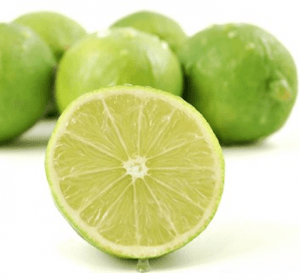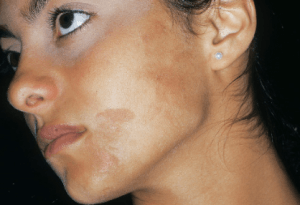Lime and sun together? A risky proposition for your skin
 It’s still summertime, and hopefully we are all taking care of our skin by using sunscreens and sun protection, avoiding insect bites, and treating occasional poison ivy. But there’s another common skin condition that we dermatologists see quite often during sunny weather: phytophotodermatitis. Never heard of it? We see quite a bit of it at SkinCare Physicians near Boston, and the main culprit is LIMES!
It’s still summertime, and hopefully we are all taking care of our skin by using sunscreens and sun protection, avoiding insect bites, and treating occasional poison ivy. But there’s another common skin condition that we dermatologists see quite often during sunny weather: phytophotodermatitis. Never heard of it? We see quite a bit of it at SkinCare Physicians near Boston, and the main culprit is LIMES!
Understanding phytophotodermatitis
To better understand this condition, let’s break down the derivation of the word:
- “Phyto” = plant
- “Photo” = light
- “Dermatitis”= inflammation of the skin
So, phytophotodermatitis means inflammation of the skin that is caused by exposure to certain plants in combination with sun exposure. Some plants contain light-sensitizing chemicals that cause blistering rashes or skin pigmentation after sun exposure.
The most common scenarios of exposure
One of the most common sources of phytophotodermatitis is from limes, which are commonly consumed in sunny climates! At SkinCare Physicians, we have seen many patients with this condition who have been exposed after squeezing a lime into a drink, but other patients have developed this condition after pressing limes to make a Key Lime pie, and we even saw one child recently who had been sucking on limes during a sunny vacation, developing a blistery and pigmented rash around his mouth! Children can also develop this condition after eating real juice lime popsicles that drip onto the skin in hot, sunny weather. Chefs and bartenders who might be catering in a sunny location and handling citrus fruits (or celery) are also at risk.
What does phytophotodermatitis look like

Image source: Fitzpatrick’s Color Atlas & Synopsis of Clinical Dermatology Klaus Wolff, Richard Allen Johnson, Dick Suurmond Copyright 2005, 2001, 1997, 1993 by The McGraw-Hill Companies
The eruption may begin as a blistering rash, in essence a sunburn, in precisely the spots that were exposed to the lime juice. In many patients, the inflammation may be so mild that it is not even noticed until the puzzling pigmentation shows up on the skin a day or 2 later!
Other sources of exposure
Lime exposure in sunny climates is by far the most common scenario we see at SkinCare Physicians. But there are other plants that can cause this reaction: wild parsnip, parsley, and celery can cause this condition as well. Giant hogweed is of particular concern. The sap of this invasive plant can cause such severe phytophotodermatitis involving not only the skin, but also the eyes, that scarring and blindness has been reported.
How to avoid and treat phytophotodermatitis
The good news is that the rash and pigmentation of phytophotodermatitis will resolve spontaneously, but the best approach is to avoid it altogether! The chemicals that cause phytophotodermatitis are easily removed with simple soap and water.
Follow these tips:
- Sun protection: use a good broad-spectrum sunscreen and seek shade when possible
- Wash your hands and any other areas of skin that may have been exposed to lime juice or other botanicals that are sensitizing
- Keep an eye on your children and watch their handling of limes if they are out in the sun
- Treat the inflammatory eruption as you would any sunburn
- Treat the resulting hyperpigmentation with a bleaching agent prescribed by your dermatologist.
If you have any concerns about a blistering or pigmented rash, contact your dermatologist at SkinCare Physicians: (617) 731-1600.
Finally, to remember this summer curse, just sing the following lyrics to the tune of Harry Nilsson’s song, Put the Lime in the coconut:
Put the LIME in the coconut, call your doctor, wake her up!
(with apologies to Harry Nilsson)
Brother bought a coconut, he bought it for a dime
His sister had another one, she paid it for a lime
She put the lime in the coconut, she drank them both up
She put the lime in the coconut, she spilled a little from her cup
She put the lime in the coconut, she had a rash when she woke up!
She put the lime in the coconut, she called her doctor, woke him up
And said, Doctor, ain’t there nothin’ I can seek?
I say, doctor, to treat these rashy streaks?
I say, doctor, ain’t there nothin’ I can seek?
I say, doctor, to lighten up my cheeks?



Leave a Reply